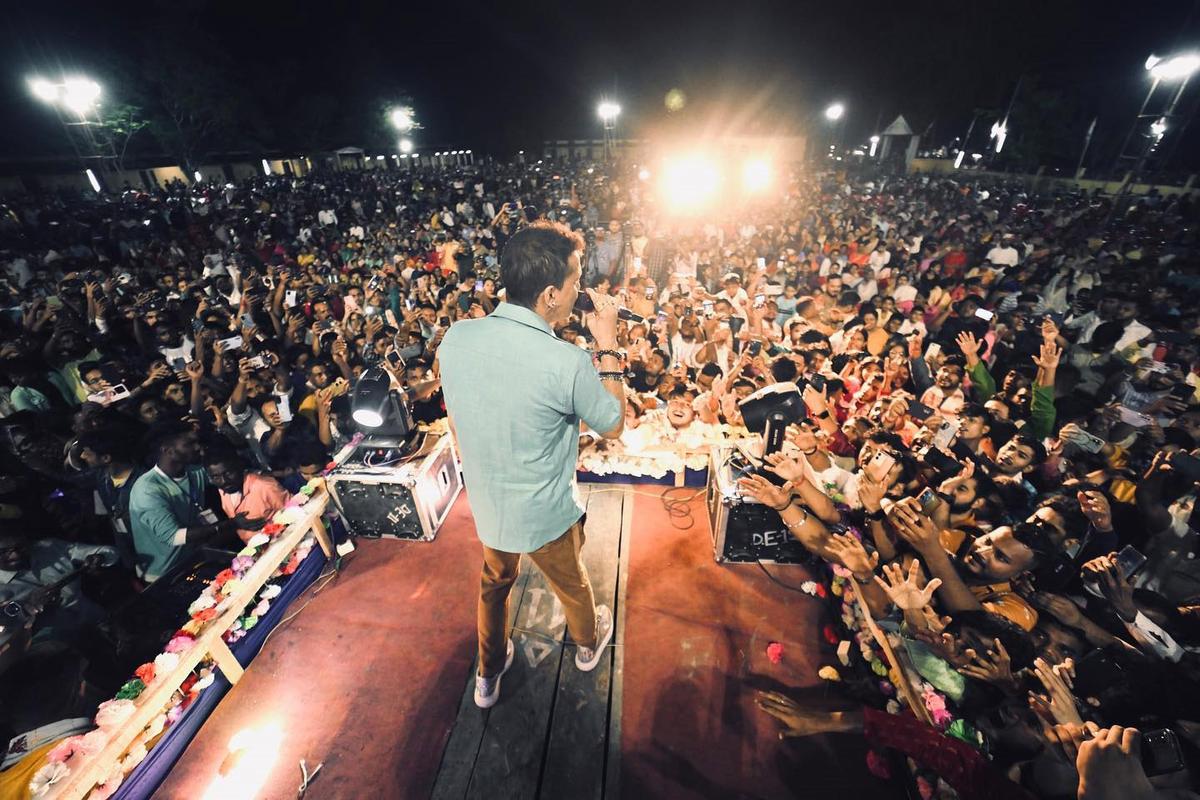“It was not just his songs but the person behind the music that truly mattered,” said 23-year-old Gui, whom I met during a recent trip to Jaipur. “The youth of the Northeast often feel disconnected from the rest of the country. That’s why they gravitate towards cultural icons such as Zubeen — artistes who give them a sense of identity and a voice. It’s also why nationally recognised artistes from the region never lose touch with their roots. They take it upon themselves to highlight the issues affecting their communities. Zubeen was not just a musician, he was a cultural activist who used his art to passionately advocate for the people of Assam,” added Gui.
Zubeen Garg’s death in Singapore plunged Assam and the wider Northeast into profound mourning. His cremation, on September 23 at Kamarkuchi village (near Guwahati), drew an unprecedented crowd — said to be the fourth largest gathering worldwide, according to the Limca Book of Records. This stands as a testament to the deep connection fans had with the enigmatic musician.”
With tears streaming down their faces, thousands of admirers, including Chief Minister Himanta Biswa Sarma, joined in singing his iconic song, ‘Mayabini ratir bukut’ (from the film Daag), filling the atmosphere with raw emotions. At a 2019 concert in Guwahati, Zubeen had expressed a wish: “When I die, ‘Mayabini’ should be sung.” In those poignant moments, at his farewell, his words echoed in the hearts of all those present.
Music is a way of life in the Northeast, woven deeply into the social and spiritual fabric of the region. While celebrated today for its vibrant rock, rap and blues scene, the region also boasts of a rich legacy of folk forms and devotional songs — passed down through generations and performed at festivals and community gatherings. “There is a song for every occasion in Assam,” says well-known Assamese singer and music director Tarali Sarma, some of whose compositions Zubeen had sung.
Tarali sings with Zubeen
Performing arts was at the core of Assam’s saint-scholar Srimanta Sankaradeva’s Vaishnavite movement. He reached out to people through Borgeet, Sattriya dance and the theatrical form of Ankiya Bhaona. Part of this tradition is also Ghoxa that devotees sing at Namghar (prayer house) and in homes.
Rituraj Rajalim, a keyboardist with the G Force band from Namchi in Sikkim and a music instructor at the Tashi Namgyal Academy in Gangtok, says, “Much of what we play and sing is inspired by our hometown. Music is an important part of our upbringing. In schools, it’s not treated as an extracurricular activity but taught like any other subject. Even if children don’t become performers, they grow up appreciating music.”
Ghoxa being sung by Zubeen Garg
Unique flavour

Zubeen Garg at one of his performances at Helacha.
| Photo Credit:
Photo courtesy: Facebook
The music of the Northeast has its own unique flavour. “You cannot compare it to Hindustani or Carnatic music,” says Krishnakshi Kashyap, an exponent of Sattriya. “It represents the tribes and communities of the region, and showcases their way of life. And Zubeen’s music was an amalgam of his imagination and the region’s ethos. His astounding repertoire, of over 38,000 songs, spanned multiple languages, and included Borgeet and Bihu songs as well.”
Tarali, a National Award-winning singer, has a profound understanding of Assam’s traditional sound, inherited from her father Prabhat Sarma, a renowned folk exponent and flautist. Over the years, she has witnessed the region’s music evolve, integrating contemporary and global influences.
She says, “The thriving music scene in Assam, known for its warm instrumentation and strong songwriting, has become a perfect platform for creative experimentation, with several musicians emerging as indie artistes.”

Zubeen Garg performing at Helcha.
| Photo Credit:
Photo courtesy: Facebook
The music of this region has always carried far more than just melody or rhythm — it has also borne the weight of survival in a land long marked by insurgency, identity struggles, and political neglect. Through their songs, bands and artistes have chronicled injustices, discrimination and cultural concerns, shaping a counter-narrative that binds communities together and nurtures resilience. In this context, Zubeen’s music can be seen as a form of cultural documentation. A reason why, despite his success in Bollywood, he made a conscious decision to return to Assam.
“One of Assam’s earliest cultural icons, singer-songwriter Bhupen Hazarika, also used his music to speak powerfully about human rights and the environment. But when 20-year-old Zubeen burst into the music industry with his debut album Anamika — which became a chartbuster — he was like a breath of fresh air. His rockstar persona, marked by bold fashion choices, along with his songs that fused contemporary sounds with local sensibilities, made him a symbol of a new generation. His belief that ‘I belong to everyone beyond caste or religion’ set him apart and made him a phenomenon whose legacy will continue to resonate even after his passing,” says Tarali, as plans are underway to digitally preserve his voice.
Published – September 25, 2025 12:45 pm IST









